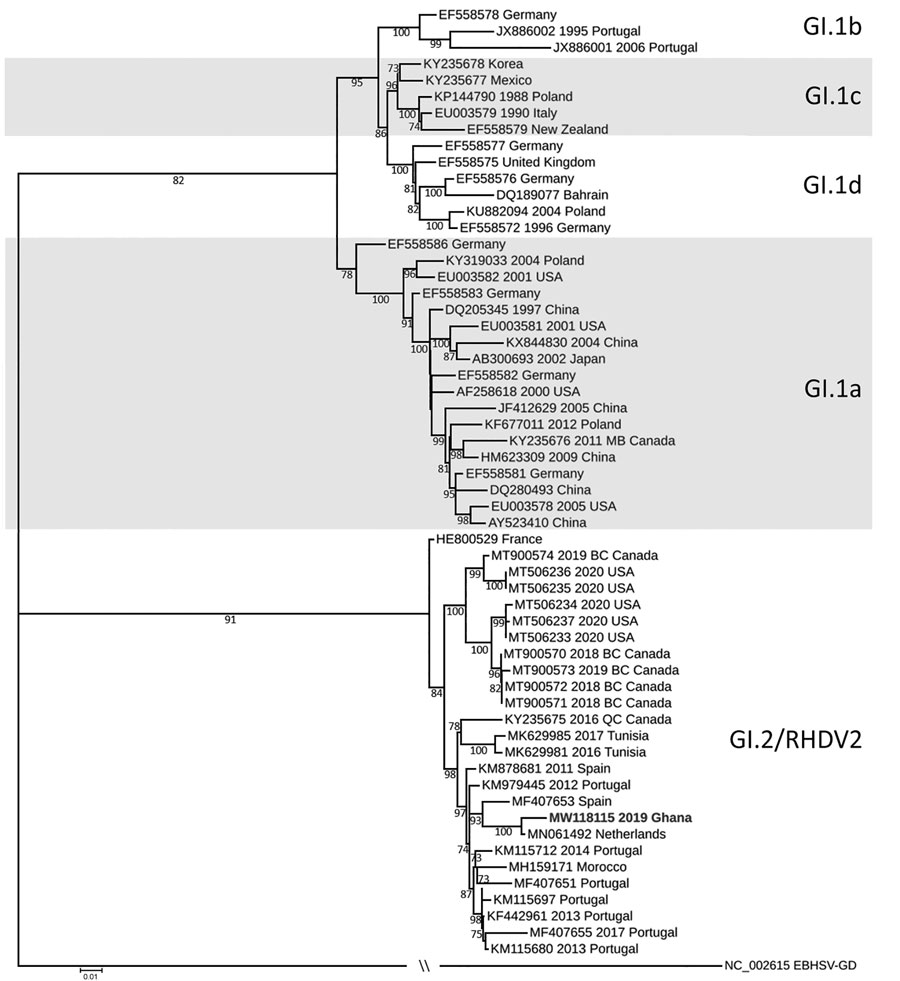Volume 27, Number 7—July 2021
Research Letter
Outbreak of Rabbit Hemorrhagic Disease Virus 2 Infections, Ghana
Figure

Figure. Maximum-likelihood phylogenetic tree of the viral protein 60 region of rabbit hemorrhagic disease virus from Ghana (boldface) and reference sequences. We downloaded sequences directly from or extracted them from the whole genome sequences downloaded from GenBank. We aligned sequences in Geneious Prime (Geneious, https://www.geneious.com) and constructed the phylogenetic tree with the IQ-TREE Web server (http://iqtree.cibiv.univie.ac.at), using 1,000 bootstrap replicates as indicated in the tree. We then visualized the phylogenetic tree using iTOL (https://itol.embl.de). Scale bar indicates branch length.
Page created: March 31, 2021
Page updated: June 17, 2021
Page reviewed: June 17, 2021
The conclusions, findings, and opinions expressed by authors contributing to this journal do not necessarily reflect the official position of the U.S. Department of Health and Human Services, the Public Health Service, the Centers for Disease Control and Prevention, or the authors' affiliated institutions. Use of trade names is for identification only and does not imply endorsement by any of the groups named above.